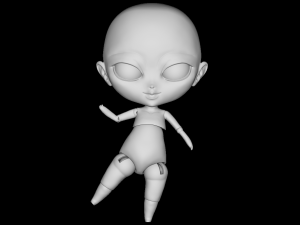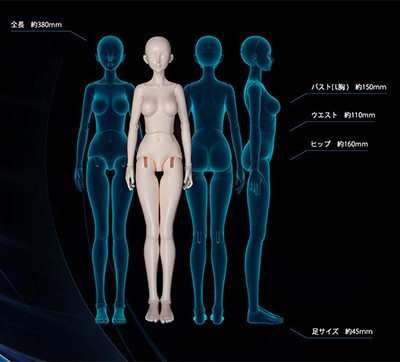
We make our dolls out of Nylon (polyamide) and they’re held together by elastic bands. We inspect and assemble every doll by hand. The doll has been sculpted by hand and was recreated using 3D modeling method. Our goal is to provide you with high-quality products and high-quality materials. This allows you to use your favourite customization methods in high temperatures, such as curing clay in the oven and boil dyes.

I found a singly slipped square (or reef) knot worked well for me: I can recommend from what experience I have had, to use careful knotting, so the strings don't come undone. I'm not an experienced doll maker, so this is the best advice I can offer. It boils down to practice and you may end up restringing your doll a number of times before you reach a point where you are happy. Bear in mind though, if you string him too tight, he'll simply "kick" and won't be able to hold his limbs straight. If you want the frog to hold a pose and not be "floppy", then the tighter you will need to string him. How you string this doll will depend on what you want to do with him. Items to be printed in the following quantities: right_foot.stl x 1 Knee.stl left_upper_arm.stl right_upper_arm.stl elbow.stl Advise the use of a brim.

These parts needed more support (I used an overhang angle of 45 degrees): Parts that use slic3r default auto detect support setting (overhang angle set to 0): head.stl body.stl forearm.stl left_hand.stl right_hand.stl chest.stl lower_leg.stl hand_ball.stl Advise the use of a brim. Right_foot.stl left_foot.stl neck_ball.stl neck_threads.stl hip_joint_upper.stl hip_joint_lower.stl finger_lower.stl finger_middle.stl finger_top.stl brace.stl eyeball.stl eyeball_pupil.stl left_thigh.stl right_thigh.stl finger_combined_decimated.stl I used a brim when printing all of these, although you could probably print the feet, neck ball, brace and neck threads without. You can now print a finger at a time and it should take far less time to slice. It was suggested I upload a combined and decimated version of the finger files. Of course, you may have better ways of doing things and all feedback is welcome. The following is a break down of how I printed the parts and what worked for me. Please note that: froggy_assembled_FOR_REF_ONLY.stl is simply a decimated combination for assembly reference and not for printing. I strongly advise measuring the diameter of your filament, as over or under extrusion could result in the model parts not fitting together properly. However, user feedback has suggested 10% infill may be a better option to avoid any possible holes for pieces like the head and feet. 2mm and an infill of 5% on a cold bed using Elmer's glue as an adherent.
#Ball jointed doll 3d model software#
I have not tested with any other slicer, printing software or printer.Īll parts were printed with a layer height of. This was sliced using Slic3r 1.2.6 and printed using RepetierHost v1.06 on an Ordbot Hadron. Unlike my other models, some parts of this frog doll require the use of supports and a brim (I used 10mm).


 0 kommentar(er)
0 kommentar(er)
